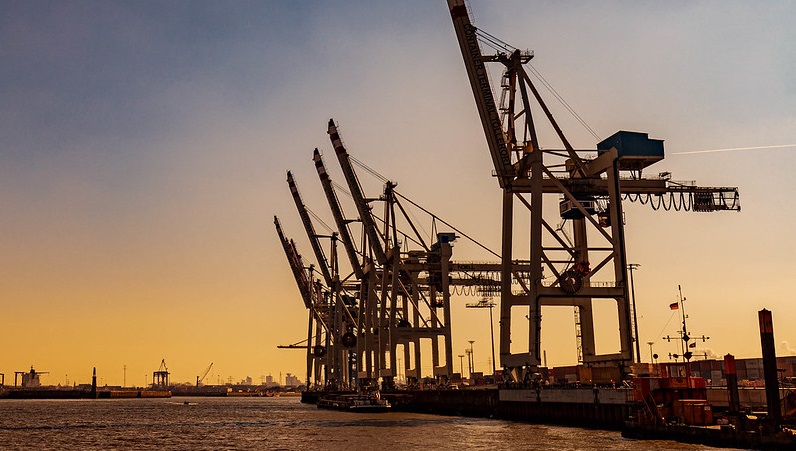The European Union has revealed the details of its carbon border tax, piling pressure on other countries to adopt carbon pricing by 2026 or face the levy.
The tax will apply to energy-intensive products imported into the EU from countries with weaker environmental regulations. It will initially apply to electricity, iron and steel, aluminum, fertilisers, and cement.
The EU says the policy is designed to stop carbon leakage and the risk companies will relocate to countries with weaker regulations. But many of the union’s trade partners fear it is protectionism in a green disguise.
Details of the tax were revealed in a 291-page document on Wednesday. The proposals includes a transition period between 2023 and the end of 2025, during which time emissions data on imports will be collected but won’t be taxed.
From 2026 to 2035, imports will be taxed but at a reduced rate, so that foreign producers are not at a competitive disadvantage with EU producers, who will benefit from free emissions trading allowances until 2035.
Susanne Droege, from the German Institute for International and Security Affairs, told Climate Home News that five years was unlikely to be enough time for countries to develop a carbon pricing mechanism from scratch to dodge the tax.
However, countries like Ukraine and Turkey, which are already developing pricing mechanisms, could finalise them by 2026.
G20 backs carbon pricing, ‘raising stakes’ among emerging economies
Products covered by the tax mainly originate from countries close to the EU’s borders like Russia, Turkey, Ukraine and North Africa. European Economic Area nations like Switzerland and Norway will be exempt from the levy. The UK is unlikely to be asked to pay due to its planned high carbon price.
Members of the Energy Community, including Ukraine, Georgia and Balkan nations, have successfully lobbied for special treatment and the document indicates they have been at least partially successful.
While most of the world’s poorest countries are not expected to be hit hard by the levy, Brussels ignored calls to exempt them and to spend the revenue raised on climate finance for developing countries.
Developing countries like Trinidad and Tobago (fertiliser), Mozambique, Cameroon, Ghana (all aluminium) and Zimbabwe (steel) do rely on exports to the EU. Droege said the EU should negotiate exemptions for developing countries, perhaps through a “de minimis” clause where minor exporters are exempt.
Large emerging economies like China, Brazil, South Africa and India have said they have “grave concerns” about the tax. In an open letter in April, they argued it was “discriminatory” and will unfairly penalise developing economies, which have done least to cause climate change.
Ocean fire raises questions about US support for Mexico’s oil and gas industry
E3G analyst Byford Tsang told Climate Home that China has always regarded the tax as a “unilateral tool” which does not respect the principle that developed and developing countries should move at different paces on climate change. “Based on the current proposal,” Tsang said, “that stance is unlikely to change as the most contentious part – keeping the revenue for the EU budget – remains.”
But given the scope of the plans, which for the moment exclude the chemical industry, the impact on China “is unlikely to be significant in the near future, at least until the end of 2025, when the transition period ends,” Tsang added.
Want more climate news? Sign up to get updates straight to your inbox
Russia, which exports electricity to Eastern Europe and fertilisers across the EU, has been fiercely opposed to the plans and has threatened to challenge the proposal at the World Trade Organisation, accusing the union of protectionism.
In May, President Vladimir Putin’s climate adviser Ruslan Edelgeriev warned “one-sided” measures like the border tax will discourage Russia and other countries from increasing their climate ambition.
Meanwhile, Russia has been trialling its own emissions trading scheme in the eastern region of Sakhalin, with plans to expand it to the rest of the country.
And Droege said Russian aluminium producers are planning to export clean aluminium to the EU and dirty aluminium to the rest of the world.
DR Congo plans to lift logging moratorium amid forest protection talks
The US has blown hot and cold on whether it should have a border tax. While Joe Biden made it a campaign commitment, climate envoy John Kerry said he was “concerned” about the EU’s plan before partially backtracking on his comments.
The Democratic leadership in the Senate is proposing a border tax but it is unclear whether they will gain the support of a majority in Congress. The Democrats have an effective majority of just one in the Senate.
According to E3G analyst Johanne Lehne, the US government wants the EU to take into account climate measures, such as carbon intensity targets, as having a similar impact on reducing emissions than carbon pricing.
The EU’s proposal states that “agreements with third countries could be considered as an alternative to the application of [carbon border tax] in case they ensure a higher degree of effectiveness and ambition to achieve the decarbonisation of a sector.”
The sentence appears designed to appease the US government, Lehne said.
In December 2020, the Japanese government said it was considering a response to the EU and US’s potential carbon border taxes “to secure a level playing field with countries that are not willing to take sufficient measures against global warming”.
Taiwan’s Environmental Protection Agency announced today that it will speed up its implementation of carbon pricing in response to the EU’s tax and the possibility of the US and Japan following suit.
